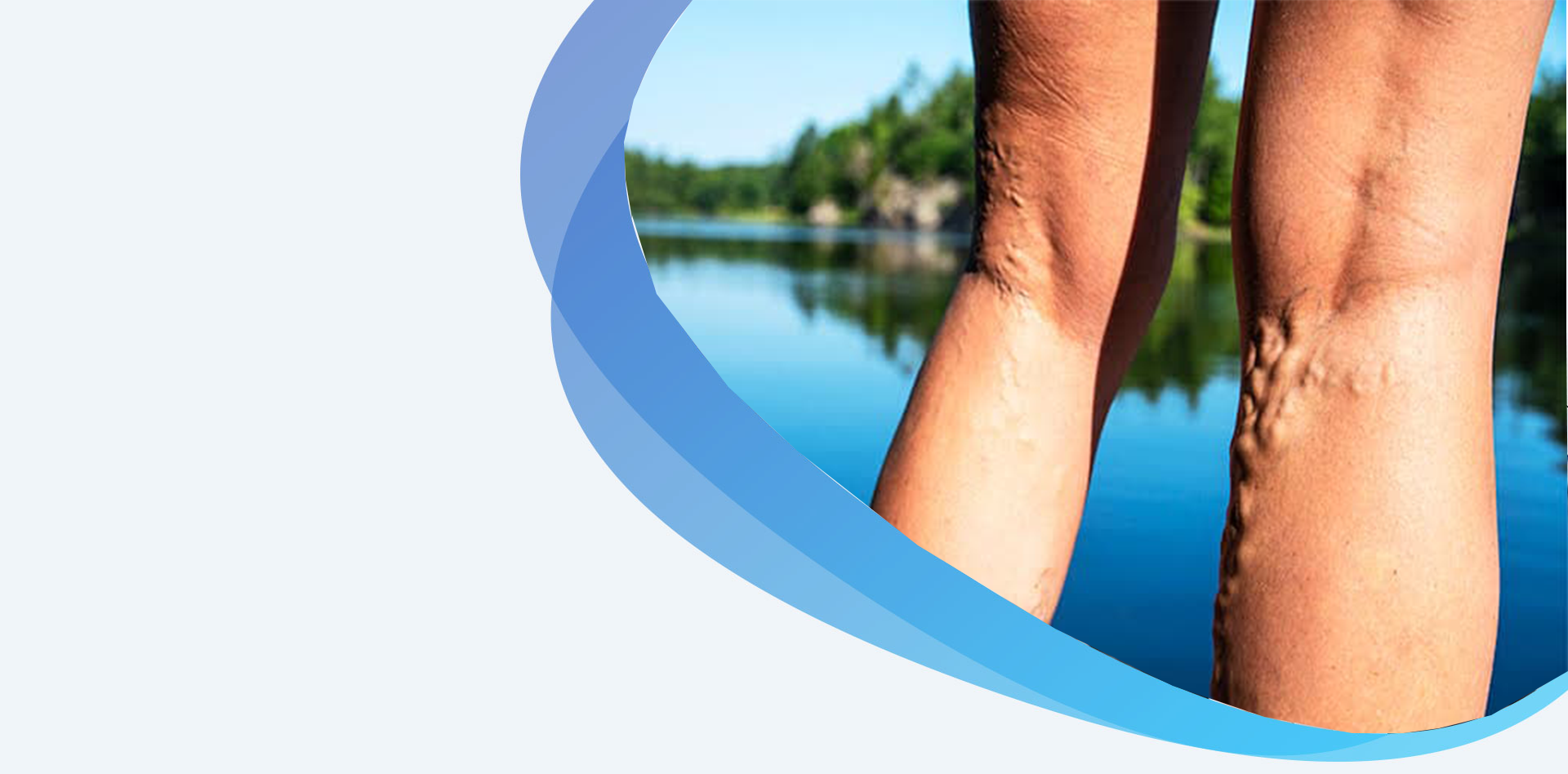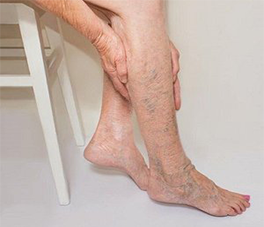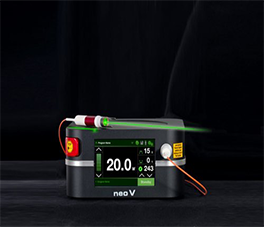Endoscopic Surgery-Varicose


Large bulging veins in the legs that can cause many different types of symptoms. Varicose veins can occur in almost anyone and affect up to 35% of people in the India. You may inherit a tendency to develop varicose veins from a parent. Women, women who have had multiple children, and obese persons are at a higher risk.
The following information deals with the operation for varicose veins.
The damaged valves in the veins cannot be cured so the best way to cure the problem is to remove the affected veins. The aim of surgery is to take pressure off the skin veins in the leg, by tying and dividing (and often removing) the principal skin veins in the leg. The removal of varicose veins does not affect blood flow because other veins and especially the deep veins take over this job. The operation is particularly suitable for people with:
The aims of surgery are to reduce to normal the pressure in the skin veins. This will prevent existing varicose veins from enlarging further, and will prevent new varicose veins from growing. For those with skin changes around the ankles or previous ulceration, reducing the pressure prevents worsening of the skin change and usually reduces the risk of further ulceration. For this group, the addition of support stockings further protects the skin around the ankles.
Before varicose vein surgery, there are a number of tests that need to be done. These are of two types: those to assess whether you qualify for varicose vein surgery, and some immediate pre-operative tests. Tests to see whether you qualify for the operation have already been done. These will always include examination with a handheld Doppler, and may include an ultrasound scan. Immediate pre-operative tests include: blood tests and ECG for some, and completing the paperwork. These immediate pre-operative tests are usually completed at a pre-admission visit to the hospital a short time before your operation.

Varicose vein surgery is often performed as a Day Case. If you are fit, have a family member to take you home, and be with you over night, you will probably qualify. Those having more complex surgery and those who live alone will stay in hospital over night. You should bring with you all the medications that you are currently taking. You will be admitted to your bed by one of the nurses who will also complete your nursing record.
The surgeon who will be performing your operation will visit you immediately before the procedure. He will mark up your veins with a waterproof pen, agreeing with you which veins will be removed. You should ensure that all your varicose veins are marked. The doctor who will give you the anaesthetic will also visit you, and explain the anaesthetic to you.

Varicose vein surgery is performed under general anaesthetic. A tiny needle is placed in the back of your hand. The anaesthetic is injected through the needle and you will be asleep within a few seconds. While you are asleep, local anaesthetic will be used around the groin incision and the incision on the back of the knee (when used). When you wake up the incisions should be numb. Sometimes a drip is placed into a vein in your arm (wrist usually) to give you some fluids during and following surgery.
The operation
The operation varies a little from case to case, depending on where the leaky valves are. Normally you will have a slanting cut about 4-6cm long running in the skin crease of the groin. Through this incision the top end of the faulty skin vein (long saphenous vein) is tied off to stop blood flowing through it - this is known as ligation. A wire is then inserted into the vein and passed down to knee level. At knee level a second cut is made and the vein (with the wire running through it) is pulled out. This procedure is called stripping. The ligation and removal of the long saphenous vein deals with the cause of the varicose veins and should prevent recurrence.
Less frequently, when the principal vein on the back of the knee has a leaking valve, it too needs ligation. This is performed through a horizontal incision about 3cm long on the back of the knee. The vein is then removed as before. The short saphenous vein is rarely stripped from the leg because it lies close to a nerve, picking up skin sensation, which may be damaged.
Finally, in most cases, the visible varicose veins are removed from the leg through tiny incisions about 2-3mm in length. Incisions are placed about 3-5cm apart along the line of the varicose vein. There may be a large number of tiny incisions if the varicose veins are extensive. The larger incisions are closed with a stitch, which lies beneath the skin and doesn’t need to be removed. The smaller incisions are not stitched because they heal well. The leg is bandaged firmly from toe to groin at the end of the operation.
After the treatment
You will usually be taken to the theatre recovery area after the operation where you will wake up. When you are fully awake (usually 20-30 minutes) you will be returned to the ward. Most people describe the leg as stinging or burning when they wake up. It is unusual for the leg to be painful. Following this sort of surgery you are very unlikely to feel sick and you should be able to eat and drink again within a few hours.
Some of the smaller incisions may bleed a little over the first 24-48 hours. For this reason, it is best to keep the leg covered with bandages or stockings for the first 48 hours. After this time, the stockings may provide support to the bruising making the leg more comfortable. They may be worn for up to 10 days, but do not usually help beyond this time. The incisions, although initially very visible, will subside to become virtually invisible within 9-12 months. There is usually extensive bruising in the leg, particularly down the inside of the thigh. This bruising usually lasts for 3-4 weeks. Removal of the skin veins means that blood returns to the heart through the deep veins more efficiently than before the operation.

Most people describe the leg as sore and uncomfortable when they get home. The symptoms increase steadily from the second post-operative day and are usually at their worst on the 8th-10th post-operative day. The discomfort usually resolves 12-14 days after the operation. Occasionally, usually when there is phlebitis, the leg will be painful. The pain may last for up to three weeks in this situation.
Regular daily exercise such as going for a walk or using an exercise bike to provide a gradual return to normal activity is recommended. To rest up after the operation raises the risk of developing blood clots in the deep veins (deep vein thrombosis or DVT). Regular exercise reduces this risk, but makes the leg more uncomfortable.
Driving: You will be able to drive within 48 hours of the operation provided the leg is not too uncomfortable.
Bathing: You can bath or shower within 48 hours of operation. Sometimes bathing or showering immediately after surgery may lead to bleeding from the smaller incisions.
Work: If this applies to you, you should be able to return to work within 1-3 weeks of surgery depending on your job. Your GP will advise you of this when you see him/her for your sick-note.
Lifting: There are no limitations in this area.
Medicines: You will usually be sent home with some painkillers. You will be advised on their use before you leave hospital.
Complications
Complications after varicose vein surgery are uncommon.
Chest infections: These can occur following this type of surgery, particularly in smokers, and may require treatment with antibiotics and physiotherapy.
Wound infection: Wounds sometimes become infected and this may need treatment with antibiotics. Serious infections are rare.
Fluid leak from wound: Occasionally the groin incision may leak blood stained or clear fluid. This usually this lasts a few days when it is bloodstained. Sometimes, clear fluid collects under the groin incision. It may be contained beneath the skin or it may leak through the incision (this is known as a lymphocele). This occurs infrequently mainly following re-operation on the groin. If there is leakage from the groin, it may take up to 6 weeks to settle.
Nerve injuries: These are uncommon occurring in about 1 in 20 cases. Two skin nerves are particularly at risk: the first picks up sensation from the top of the foot, and the second from the outer border of the foot. Other unnamed nerves may also sometimes be damaged leading to reduced sensation anywhere in the leg. The reduced sensation may be very noticeable at first, but normally diminishes with time and is not usually a problem in the longer term.
Deep Vein Thrombosis: DVT complicates any operation from time to time. It also occurs occasionally following varicose vein surgery. Patients with extensive varicose veins associated with skin changes are probably at greatest risk, but the complication is rare.
Recurrent Varicose Veins: Recurrence of varicose veins occurs in about 1 in 15 patients over a ten-year period. Sometimes further treatment may be required.
What can I do to help myself?
When you get home, try to return to normal as soon as possible. The more exercise you take, the more sore your leg will be, but the quicker the leg will return to normal. If you have further questions, please do not hesitate to ask either your consultant or one of their team, or the nurses who are looking after you on the ward.